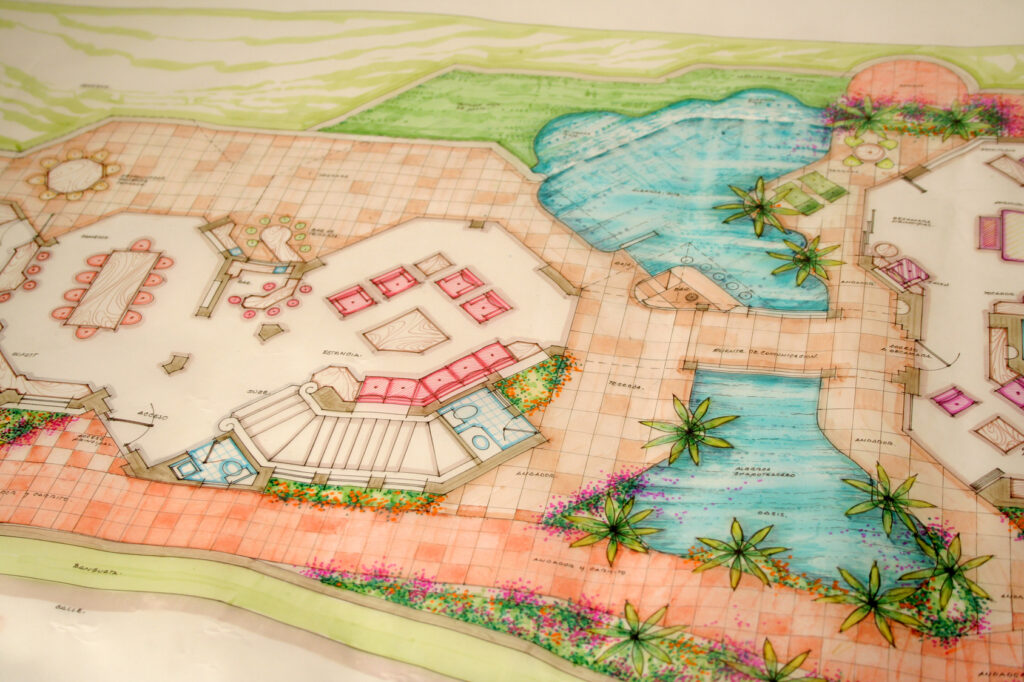
Unity
Unity is creating an overarching theme for your landscaping project. It is important to have one central theme rather than many contrasting themes in your garden to blend your design into one cohesive entity. Strive to make every element of your landscaping unified as it would be strange to have a palm tree next to your evergreen trees.
Scale
Scale refers to the relationship between elements of your garden and surrounding objects. You need to match the scale of your landscaping to not only your home, but your yard and surrounding plants and structures. However, there is no hard rule as to what is proportionate, it’s more a “does this look right?”
Balance
You can have a formal or informal balance in your yard. A formal balance is a perfectly symmetrical area that gives the feeling of stability and dignity. Informal balance, on the other hand, makes things feel more natural and unique. Neither type of balance is right or wrong, it just depends on the overall feel you wish to create.
Simplicity
It is important to stay as simple as possible in your landscaping. It will not only be less work to maintain, but it will give your yard a clean, consistent look. Keeping your landscaping simple can also cut down on on the overall cost of your landscaping.
Variety
While simplicity is important, it is also crucial to include variety in your landscaping as well, to prevent monotony. Create accents of different plants, colors, etc. to break up your landscaping design. Learn how to combine simplicity and variety for a perfect landscape design.
Emphasis
Emphasis is drawing attention to one area or feature in your landscaping. Without a focal point, your landscaping can feel confusing and disjointed. You can create emphasis through color, size, shape, groupings, or by throwing in something unexpected.
Form
Form refers to the pattern or shape of an object. Plants each have a natural form, and if you are striving to create a unified look in your landscaping, try to select plants that have the same form. A few forms include: columnar, oval, vase, weeping, pyramidal, and round.
Line
Lines create natural breaks in a piece of work. Linear lines give the sense of structure and modernism, while non-linear lines such as curves give a more natural and casual look to a garden. Horizontal lines pull the eye along the ground, making a space feel larger. Vertical lines also will make your yard appear larger by pulling the eye up towards the sky.
Texture
Texture refers to how smooth or rough a plant or landscaping element is. It is a good idea to vary textures to make your garden feel more alive.
Color
Color is a powerful element as it can create a mood or feeling just by looking at it. Depending on what mood you want to have in your landscaping will determine which colors to employ. You can also use color to draw focus to something in your yard by using opposites or patterns.
Sequence
Sequence is the pattern that your landscaping creates, using line, texture, color, size, etc. to invoke movement or life. By pulling together many of the other elements of landscaping design, you can create a natural flow to your landscaping project.
